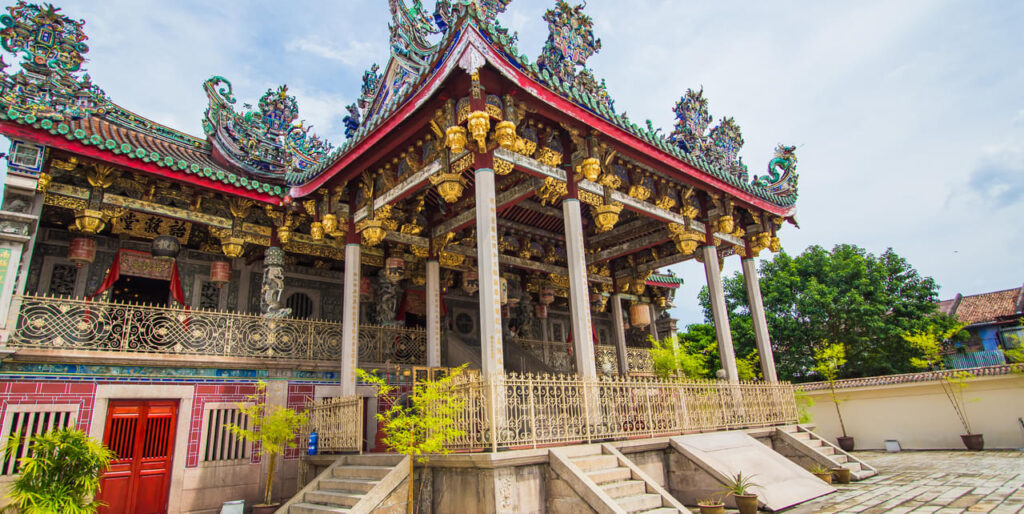Kuala Lumpur is a treasure trove of history and culture, especially when it comes to its temples. From grand Hindu shrines to famous Buddhist temples in Kuala Lumpur and Taoist sanctuaries, the city’s temples are a feast for the eyes and soul. Join me as we explore the six most famous temples in Kuala Lumpur— you won’t want to miss these spiritual gems!
Most Famous Temple In Kuala Lumpur
Thean Hou Temple
The Thean Hou Temple is one of the famous temples in Kuala Lumpur. Also a vibrant and important cultural landmark in Kuala Lumpur. It’s dedicated to three Chinese goddesses and beautifully blends traditional practices with modern architecture.
Description and Significance
The Thean Hou Temple stands as a symbol of cultural unity and spiritual devotion in Kuala Lumpur. This temple, dedicated to the goddesses Tian Hou, Guan Yin, and Shui Wei Sheng Niang, reflects a rich cultural heritage. It’s a place where you can feel the deep roots of Chinese tradition mixed with contemporary influences.
Architectural Highlights
The temple’s architecture is truly stunning and worth exploring.
- Six-tiered structure: With towering pillars and huge roofs, the temple’s design is both grand and intricate.
- Ornate carvings: Detailed carvings adorn every corner, showcasing skilled craftsmanship.
- Multi-arched gateway: Red pillars symbolize prosperity and welcome visitors warmly.
Visitor Experience
Located on Robson Hill, the temple offers breathtaking views of the city. Visitors can enjoy:
- Scenic location: Perfect for taking in panoramic cityscapes.
- Festivals and activities: Experience vibrant celebrations like the Mooncake Festival and Chinese New Year, which bring the temple to life with color and joy.
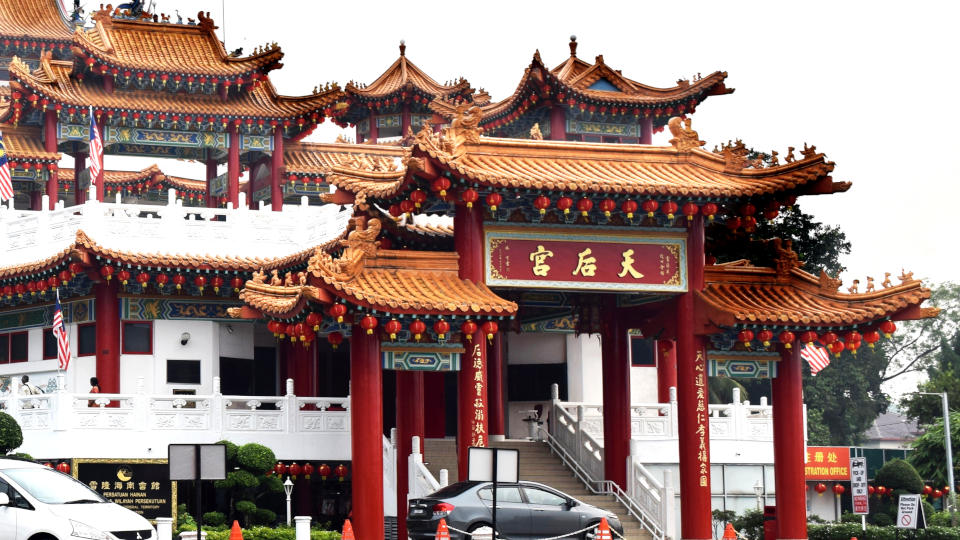
Sri Mahamariamman Temple
The Sri Mahamariamman Temple is the oldest Hindu temple in Kuala Lumpur, established in 1873. It serves as a vital cultural and national heritage site for Indian immigrants.
Description and Significance
Sri Mahamariamman Temple is not just a place of worship but a cultural beacon for Indian immigrants. Founded in 1873, it stands as the oldest Hindu temple in the city and is cherished for its historical importance.
Architectural Highlights
The temple’s design is a visual delight.
- Dravidian architecture: The temple features an ornate ‘Raja Gopuram’ tower.
- Extravagant decorations: Adorned with precious stones, gold, and tiles from Spain and Italy, the temple is a masterpiece.
Visitor Experience
Located at the edge of Chinatown, the temple is easily accessible and offers a rich spiritual experience.
- Easy accessibility: Situated conveniently for visitors.
- Richly decorated shrines: The temple houses beautifully adorned shrines to various deities, enhancing the visit.
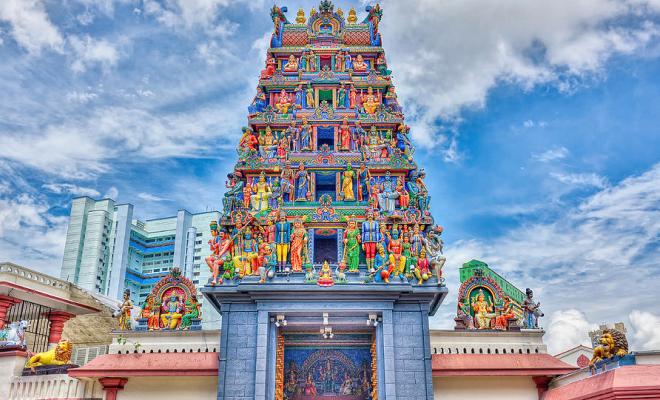
Batu Caves Temple
The Batu Caves Temple is a famous tourist attraction in Selangor, just north of Kuala Lumpur. This site features a series of caves and cave temples dedicated to Hindu deities.
Description and Significance
Batu Caves Temple is renowned for its spiritual and cultural significance. Located in Selangor, it draws visitors with its majestic caves and Hindu temples, making it a key religious site.
Architectural Highlights
The temple’s architecture is impressive.
- Large statue of Murugan: The grand statue of the Hindu god Murugan stands at the entrance, welcoming visitors.
- 272 steep steps: Leading to the main temple, these steps offer stunning views of the surroundings.
Visitor Experience
Visitors to Batu Caves can expect a memorable experience.
- Frolicking monkeys: Enjoy watching playful monkeys along the steps.
- Panoramic views: The climb rewards you with beautiful views of the area.
- Annual Thaipusam festival: A major event that attracts thousands of devotees every year.
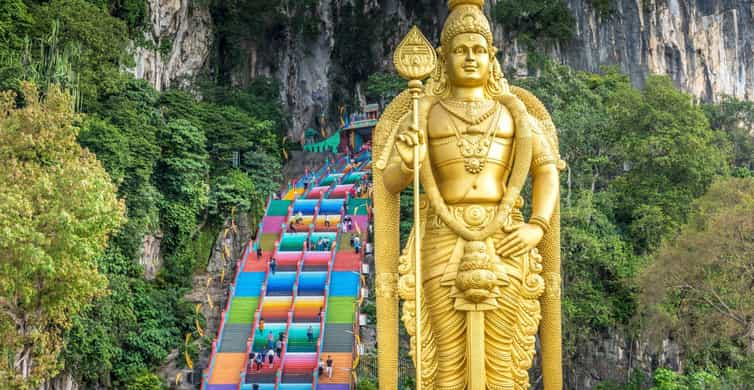
Guan Di Temple
Guan Di Temple is one of Kuala Lumpur’s oldest Taoist temples, established in the late 19th century. It is dedicated to the Taoist God of War and Literature.
Description and Significance
Guan Di Temple stands as a historical and religious landmark in Kuala Lumpur. Founded in the late 1800s, it is dedicated to the God of War and Literature, embodying rich cultural traditions.
Architectural Highlights
The temple boasts impressive architectural features.
- Intricate roof ridges: Detailed designs adorn the roof, showcasing traditional craftsmanship.
- Majestic memorial plaques and wooden statues: These elements add to the temple’s grandeur.
- Feng Shui architecture: The temple follows ancient practices to enhance its spiritual ambiance.
Visitor Experience
Located in Chinatown, Guan Di Temple offers a unique visit.
- Cultural proximity: It’s near other significant cultural sites.
- Unique rituals: Participate in or observe rituals involving the 59 kg copper sword (Guan Dao) for abundant blessings.
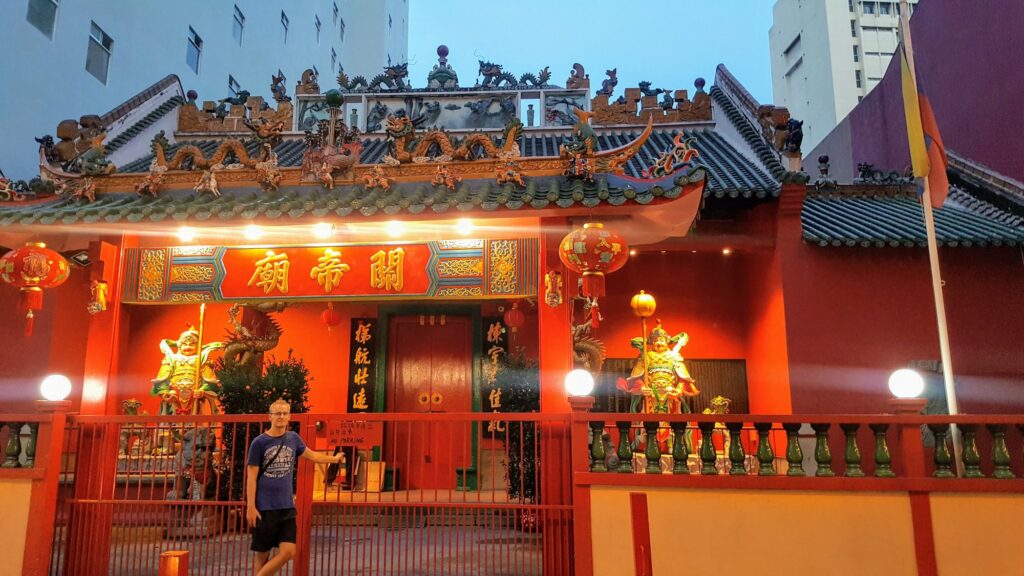
Travel Tips
When visiting Kuala Lumpur’s temples, it’s important to know the best times to visit, cultural etiquette, and transportation options. These tips will help you make the most of your trip.
Best Times to Visit Each Temple
Visiting temples early in the morning or late in the afternoon can help you avoid the midday heat and crowds. Weekdays are generally less crowded than weekends, providing a more peaceful experience.
Cultural Etiquette and Dress Code
Respectful behavior is essential when visiting temples. Dress modestly by covering your shoulders and knees. Remove your shoes before entering and speak softly. Always ask for permission before taking photos inside.
Accessibility and Transportation Options
Most temples are accessible by public transport. Use the LRT or MRT for convenient access. Taxis and ride-sharing services like Grab are also reliable options. Some temples may have steep steps or uneven ground, so be prepared for a bit of walking.
Festivals and Events
Temples in Kuala Lumpur host vibrant festivals and events. These occasions are great opportunities to experience local culture and traditions.
Key Religious and Cultural Festivals
- Thaipusam: Celebrated at Batu Caves with colorful processions.
- Chinese New Year: Festivities at Thean Hou Temple with lion dances and fireworks.
- Deepavali: The festival of lights celebrated at Sri Mahamariamman Temple.
Special Events and Activities for Tourists
Many temples offer guided tours and cultural performances. Participating in these activities can provide deeper insights into the temple’s history and traditions.
Local Insights
Gaining insights from locals can enrich your temple visit. Interviews with temple priests or guides can reveal fascinating details about the temples.
Interviews with Temple Priests or Local Guides
Talking to priests or guides can provide unique perspectives on the temple’s significance and daily practices. They often share stories that are not found in guidebooks.
Historical Anecdotes and Lesser-Known Facts
Discovering historical anecdotes and lesser-known facts adds depth to your visit. For example, learning about the construction challenges of the Batu Caves steps or the hidden symbolism in Thean Hou Temple’s architecture can make your experience more memorable.
FAQs
The Thean Hou Temple is known for its vibrant and colorful architecture, featuring a six-tiered structure with ornate carvings and red pillars symbolizing prosperity.
Yes, visitors should dress modestly, covering shoulders and knees. Shoes must be removed before entering, and respectful behavior is essential.
The Sri Mahamariamman Temple is the most famous Hindu temple in KL, renowned for its historical significance and beautiful Dravidian architecture.

